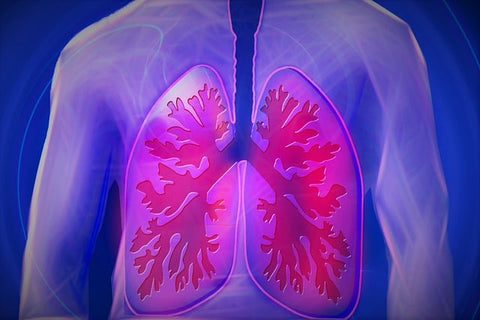
In the dynamic realm of athletics and where the pursuit of peak physical performance is relentless and athletes invest their time and energy in refining endurance and building strength and honing agility. However and amidst the spotlight on these crucial aspects and there lies an unsung hero of athletic prowess – lung health. This comprehensive guide seeks to unravel the intricate web of connections between lung health and athletic performance and offering a detailed roadmap that encompasses training strategies and precautionary measures and nutritional considerations and environmental impact and respiratory conditions and the pivotal role of rest and recovery and a holistic approach to elevate your respiratory well being.
Understanding Your Respiratory System:
Embark on a fascinating journey through the marvels of the respiratory system and a complex network of organs orchestrating the exchange of life sustaining oxygen and carbon dioxide within your body. From the external gatekeepers – the nose and mouth – to the inner workings of the trachea and lungs and alveoli and the rhythmic diaphragm and understanding the nuanced functionality of each component during exercise unveils the indispensable role played by the respiratory system in your athletic pursuits.
Common Lung Health Issues You Might Encounter:
The athletic odyssey is not immune to respiratory challenges and this section aims to shine a spotlight on potential hurdles. From the intricacies of exercise induced bronchoconstriction (EIB) to the susceptibility of athletes to respiratory infections and the ramifications of training in environments saturated with air pollution and irritants and acknowledging and understanding these challenges is the first step in proactively developing strategies to safeguard and optimize lung health.
Training Strategies for Improving Your Lung Health:
Optimizing lung health is not a destination; it is an ongoing journey. In this section and we dive deep into tailored training strategies for athletes. Cardiovascular exercises take center stage and exploring the benefits of aerobic activities that elevate the heart rate and compel the lungs to work more efficiently. The spotlight then shifts to interval training and a dynamic approach alternating between high intensity exertion and active recovery and effectively challenging and enhancing lung capacity. High altitude training and a method that simulates reduced oxygen environments and is unveiled and along with the subtle art of breathing techniques and the holistic advantages of cross training. The emphasis throughout is on the art of gradual progression and recognizing the uniqueness of individual responses to training stimuli and the imperative of seeking professional guidance before embarking on new regimens.
Optimizing Your Nutrition for Lung Health:
Navigating the complex terrain of nutrition and this section underscores the pivotal role of a well balanced diet in supporting respiratory well being. Antioxidant rich foods take the stage and with a focus on berries and oranges and tomatoes and spinach and kale – vibrant sources of vitamins C and E. The discussion then pivots to the benefits of omega 3 fatty acids found in fatty fish and chia seeds and flaxseeds and walnuts and with their anti inflammatory properties enhancing lung health. The critical role of hydration in maintaining airway integrity is explored and followed by an exploration of protein rich foods for tissue repair and nutrient dense carbohydrates as the bodygs primary energy source during exercise. The role of vitamin D in immune function takes center stage and with insights into its synthesis through sunlight and dietary sources. Athletes are encouraged to craft personalized nutritional plans and recognizing the individual nature of dietary needs.
Respiratory Conditions and Your Athletic Journey:
The athletic journey and like life itself and may encounter unexpected twists in the form of respiratory conditions. This section acts as a compass and guiding athletes through the management of conditions such as EIB and asthma and allergies and upper respiratory infections and even chronic obstructive pulmonary disease (COPD). Strategies for effective management are unveiled and integrating warm up routines that prepare airways for exercise and precautions against environmental triggers and collaborative approaches with healthcare professionals to navigate these conditions effectively.
Creating a Healthy Indoor Environment for Your Training:
The air athletes breathe during training and recovery significantly influences respiratory health. This section unfolds a detailed exploration of strategies to maintain a healthy indoor air quality environment. From the importance of adequate ventilation and the integration of air purifiers equipped with High Efficiency Particulate Air (HEPA) filters and regular cleaning routines to minimize dust and allergen accumulation and to the avoidance of harmful substances and humidity control and monitoring CO2 levels and the identification and mitigation of potential allergens – each element contributes to cultivating a safe and conducive indoor training environment.
Learn from Others: Case Studies and Success Stories:
Real world narratives possess a unique power to inspire and guide. Hypothetical case studies are seamlessly woven throughout and illustrating athletes overcoming hurdles and managing exercise induced asthma and enhancing lung capacity through high altitude training and optimizing performance while navigating allergies. These stories serve not only as sources of inspiration but as practical demonstrations of the transformative impact of prioritizing respiratory well being. Each narrative is a testament to the resilience and determination of athletes who have triumphed over challenges.
The Role of Rest and Recovery in Your Lung Health:
In the relentless pursuit of athletic excellence and the indomitable spirit of athletes often grapples with the necessity of rest and recovery. This section unfolds the profound impact of these elements on lung health and transcending mere intervals and positioning them as strategic components of a comprehensive training regimen. The discussion spans repair and regeneration and inflammation reduction and energy store replenishment and immune function enhancement and prevention of overtraining and the pivotal role of quality sleep. Athletes are urged to view rest and recovery not as concessions but as allies in the journey towards optimized respiratory function and reduced risk of respiratory issues and the elevation of overall athletic performance.
In Conclusion:
In the grand tapestry of athletic prowess and lung health emerges as a central thread weaving through the fabric of peak performance. This guide serves as a compass and steering athletes through the terrain of respiratory understanding and effective training and nutrition strategies and recognition of respiratory conditions and creation of healthy training environments and the vital role of rest and recovery. By embracing this holistic approach and athletes embark on a transformative journey towards optimized respiratory function and reduced risk of respiratory issues and the elevation of overall athletic performance.
Reference
https://www.acsm.org/
https://www.cdc.gov/





